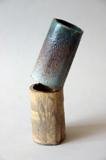Share Your Resources
Americans for the Arts
A wonderful organization based in D.C. that promotes and supports arts opportunities on national, state, and local level. This nonprofit organization serves as a vehicle of advocacy and policy making, but also is joining with local communities to keep the arts alive.
Animating Democracy
This is a branch of Americans for the Arts that focuses in on utilizing the arts as tools for civic engagement. Events and publications are centered on the important link between using the arts as a voice for critical issues in today's society.
ArtsEdge
ArtsEdge is dedicated to providing tools and resources that promote the integration of the arts and technology into ALL academic areas for a more interdisciplinary approach to teaching. The website offers lesson plan ideas and articles that support arts in education. The unique objective of the organization is to connect educators to the resources they need to be successful teachers, and for their students to be successful learners.
Boston Sculptors Gallery
This gallery continues to grow in members and space. Located on Harrison Avenue in Boston, it serves as unique venue for only sculptors and offers large amounts of space for exhibitions to occupy. New and different exhibits of sculpture go up about every month or so and is certainly worth checking out what these Boston area artists are up to.
DeCordova Museum & Sculpture Park
This wonderful museum is well known to even the general public of greater Boston. Particularly for teachers and students, it is a valuable platform for hands-on exploration of the arts. The outdoor sculpture garden is spectacular and gives kids a different kind of "playground" for their imagination and discovery. Also worthy of noting is the annual Art in the Park held at DeCordova every summer. The day involves good art, lots of hands-on art activities, and performances. This year it is being held on June 10th - check it out: Art in the Park
Fuller Craft Museum
MFA Boston
Museum of Modern Art, New York
National Art Education Association
This large organization is made up of students, K-12 teachers, Higher Education/Teacher Prep. professionals, retired teachers and professionals, and museum educators. NAEA is a resource all art teachers should at least be aware of as a place to go for publications, ideas, job openings, and news on advocacy and research in the field. Every year NAEA holds an annual convention that brings together educators from all over the country for 5 days of discussion and presentations of what's happening in the field. It's a wonderful gathering of ideas and sharing of resources.
Radical Teacher
This is my all-time favorite. Radical Teacher is a magazine that only publishes about 3 issues a year, but each one is packed with relevant issues such as gender in the classroom, bilingual education, integrating the arts, and feminist views on education. The articles are always thoughtful and provocative in a way that keeps you thinking until the next issue of Radical Teacher arrives.
Rethinking Schools
A small nonprofit started to help change the way we think about K-12 education and address such issues of inequality and diversity. The website and Rethinking Schools magazine has lots of articles on every issue you could imagine. Most appealing, is real educators who know the field are writing these articles. The articles have an air of experience and firsthand knowledge of the issues being discussed.
Teaching Tolerance
This organization promotes integrating tolerance into your classroom curriculum. The website offers useful ideas and incredible resources to help you get started. It is a wonderful resource for today's teachers who need to constantly address issues of diversity and tolerance. Teaching Tolerance suggests proactive ways to foster acceptance of differences in your classroom.
VSA Arts
The mission of VSA Arts (Very Special Arts) works to give artists working with physical, emotional, and mental disabilities opportunities and access to the arts. The organization strives to educate and support individuals and communities so that the arts may be enjoyed and participated in by all. The website hosts an incredibly extensive artist database where you can search artists by name or by medium in which they work. An important resource for the art teacher and any teacher to start thinking about incorporating artists with disabilities into the curriculum to model for students that all people are capable of great ideas and creativity.















